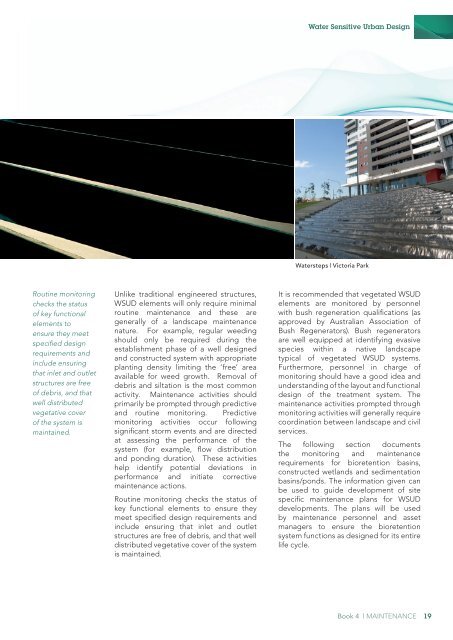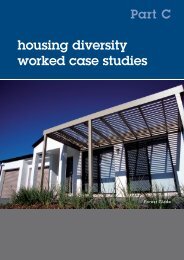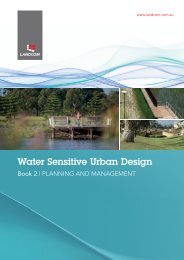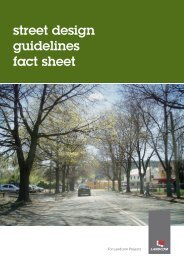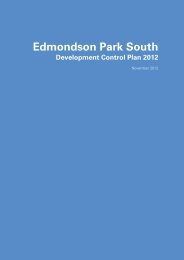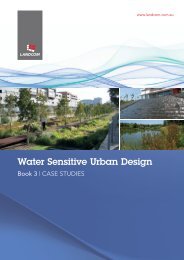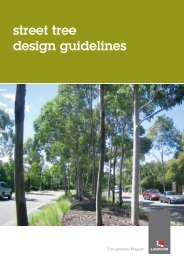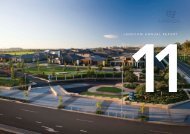Landcom Book 4 Maintenance - WSUD
Landcom Book 4 Maintenance - WSUD
Landcom Book 4 Maintenance - WSUD
You also want an ePaper? Increase the reach of your titles
YUMPU automatically turns print PDFs into web optimized ePapers that Google loves.
Water Sensitive Urban Design<br />
Watersteps | Victoria Park<br />
Routine monitoring<br />
checks the status<br />
of key functional<br />
elements to<br />
ensure they meet<br />
specified design<br />
requirements and<br />
include ensuring<br />
that inlet and outlet<br />
structures are free<br />
of debris, and that<br />
well distributed<br />
vegetative cover<br />
of the system is<br />
maintained.<br />
Unlike traditional engineered structures,<br />
<strong>WSUD</strong> elements will only require minimal<br />
routine maintenance and these are<br />
generally of a landscape maintenance<br />
nature. For example, regular weeding<br />
should only be required during the<br />
establishment phase of a well designed<br />
and constructed system with appropriate<br />
planting density limiting the ‘free’ area<br />
available for weed growth. Removal of<br />
debris and siltation is the most common<br />
activity. <strong>Maintenance</strong> activities should<br />
primarily be prompted through predictive<br />
and routine monitoring. Predictive<br />
monitoring activities occur following<br />
significant storm events and are directed<br />
at assessing the performance of the<br />
system (for example, flow distribution<br />
and ponding duration). These activities<br />
help identify potential deviations in<br />
performance and initiate corrective<br />
maintenance actions.<br />
Routine monitoring checks the status of<br />
key functional elements to ensure they<br />
meet specified design requirements and<br />
include ensuring that inlet and outlet<br />
structures are free of debris, and that well<br />
distributed vegetative cover of the system<br />
is maintained.<br />
It is recommended that vegetated <strong>WSUD</strong><br />
elements are monitored by personnel<br />
with bush regeneration qualifications (as<br />
approved by Australian Association of<br />
Bush Regenerators). Bush regenerators<br />
are well equipped at identifying evasive<br />
species within a native landscape<br />
typical of vegetated <strong>WSUD</strong> systems.<br />
Furthermore, personnel in charge of<br />
monitoring should have a good idea and<br />
understanding of the layout and functional<br />
design of the treatment system. The<br />
maintenance activities prompted through<br />
monitoring activities will generally require<br />
coordination between landscape and civil<br />
services.<br />
The following section documents<br />
the monitoring and maintenance<br />
requirements for bioretention basins,<br />
constructed wetlands and sedimentation<br />
basins/ponds. The information given can<br />
be used to guide development of site<br />
specific maintenance plans for <strong>WSUD</strong><br />
developments. The plans will be used<br />
by maintenance personnel and asset<br />
managers to ensure the bioretention<br />
system functions as designed for its entire<br />
life cycle.<br />
<strong>Book</strong> 4 | MAINTENANCE 19


